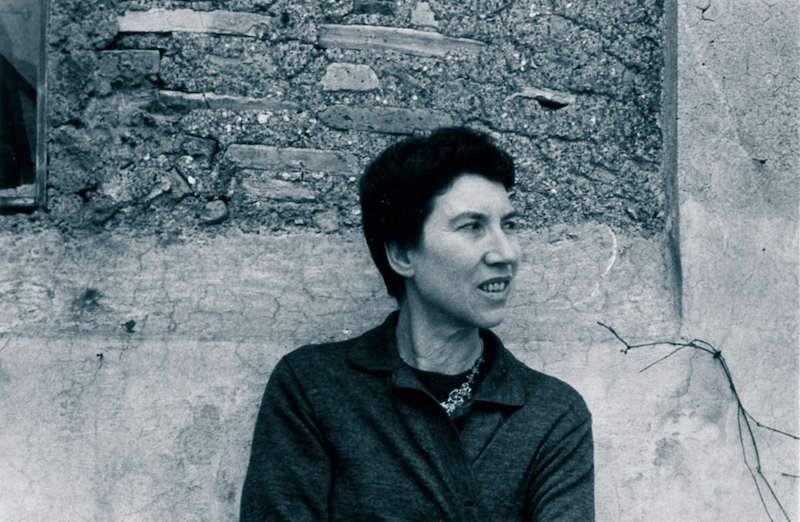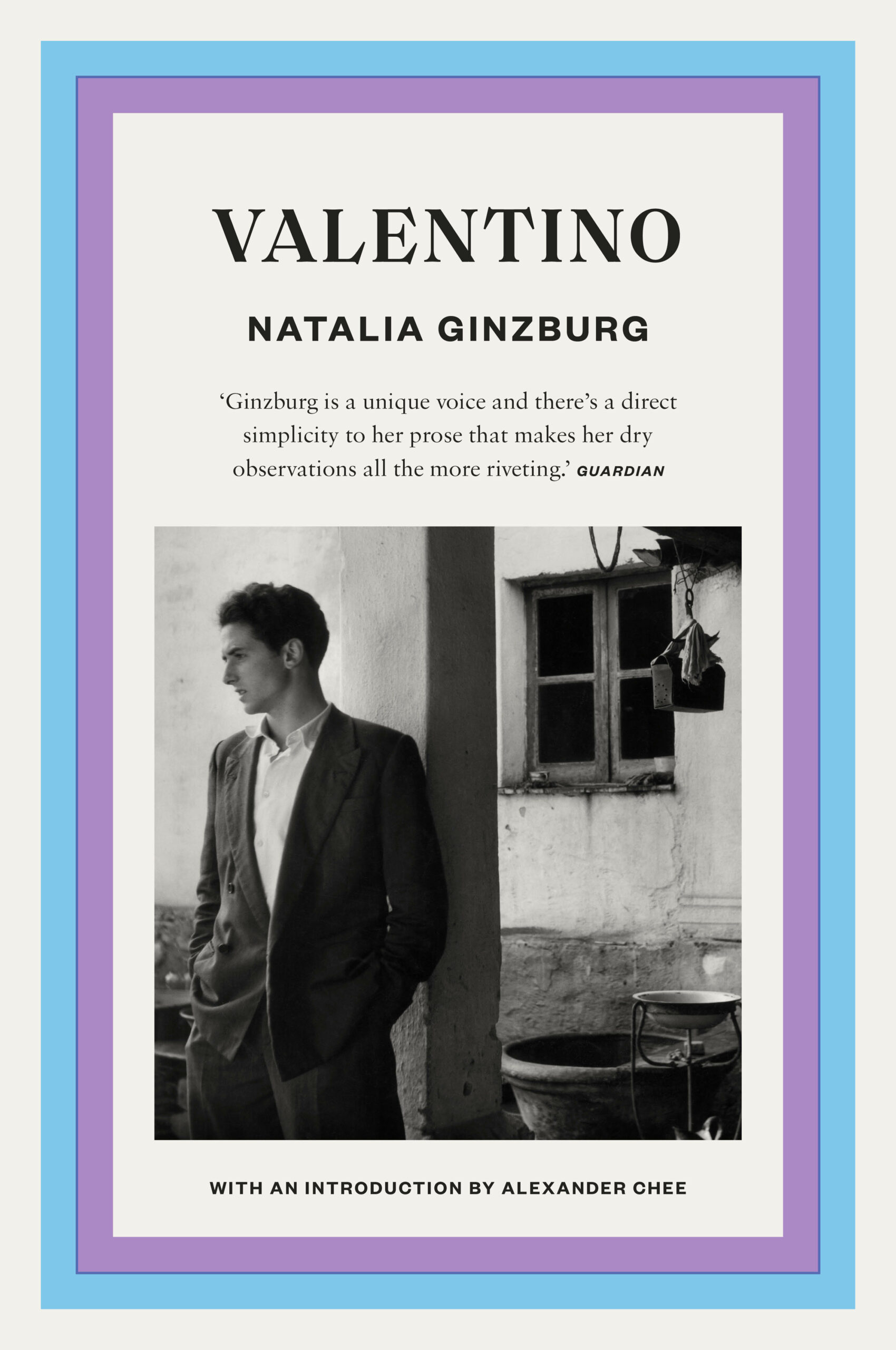
I began reading Natalia Ginzburg in translation in 2015, and as a result have read many introductions to her works by now. With each one I came to learn at least one new detail about her. She was born Natalia Levi in Palermo on July 14, 1916, and published her first short story at the age of seventeen.
She was raised in an anti-fascist family in Turin, and in her author’s note to Family Lexicon, she describes the relief of being able to write it as a Turinesi. She had left Turin only after the exile of her family due to the same fascist Racial Laws that had her publish her 1942 debut novel, The Road to the City, under the pen name Alessandra Tornimparte: Italian Jews were forbidden from publishing. By the time her second novel, The Dry Heart, appeared in 1947, she was able to publish as Natalia Ginzburg as she would for the rest of her life, until her death in the fall of 1991.
I have heard it said of Natalia Ginzburg that she is easier to translate than some other Italian writers because her style is simple. My Italian isn’t good enough for me to judge the original texts, though it is true that in general one does not find the baroque descriptions one might encounter elsewhere, such as in the work of Alessandro Manzoni, the famous Italian novelist she took as the subject of her novel The Manzoni Family. I think instead there is an extraordinary precision, which you might experience as austerity if it wasn’t itself so satisfying.
Can you fall in love with a writer just from her author’s note? Maybe so, if it is her. Her distilled directness is disarming and even tender to encounter, and perhaps instructive too on the question of her style and whether it is simple or not. For her essay collection, The Little Virtues, she tells us every essay in the book is directed to a friend she will not name but who is also not in the essays, either. She adds that she did not revise the essays because she is no longer the person who wrote them.
For her novel Voices in the Evening she says, “The places and characters in this story are imaginary. The first are not found on any map, the others are not alive, nor have they ever lived, in any part of the world. I am sorry to say this having loved them as if they were real.” In both we see Ginzburg anticipate the questions a reader might ask and answer them, creating and then speaking to a subtext, which has the feeling of a clairvoyant making your fortune in front of you before you can ask any questions at all. She constructs a game around the reader, anticipating questions and reactions, and playing off of them as she constructs the next ones. If she is droll or spare or laconic, it is the eyeroll of a magician as she pulls your nickel from your ear.
She constructs a game around the reader, anticipating questions and reactions, and playing off of them as she constructs the next ones.I am sorry to say that Valentino has no such magical author’s note from her. I first discovered it in Open City, William Weaver’s 1999 anthology of seven post-war Italian writers that he’d known in Rome. Valentino is included there in its entirety, as translated by him—all of the translations are his—and each selection is prefaced by a photo of the author. In hers, her face looks carved out of stone, her hair cut short.
Weaver begins the anthology with a memoir of his own, of how he came to Italy first as an ambulance driver during World War II with literary ambitions and gradually became a literary translator, an American expat deeply immersed in the literary culture of Rome. He tells the story of how he met all of the writers, in turn. Ginzburg he meets at a dinner party in the home of Elena Croce, the writer and translator credited with having helped rescue Giuseppe di Lampedusa’s The Leopard from obscurity.
The young Ginzburg is with a professor of English literature at the University of Rome, Gabriele Baldini, who will become her second husband. She has just begun dating him (and will marry soon after this dinner party). He introduces her to Weaver, who describes himself as made shy by her—she is already formidable to Weaver for her heroism, but also because of his knowledge of a letter that makes him feel as if he has intruded on her intimate life.
The letter, from her first husband, was written to her just before his death and was included in an anthology titled Letters of Those Sentenced to Death in the Resistance. Leone Ginzburg was a professor of Russian literature at the University of Turin and when he died in prison in Rome in 1944, six years after they married, he was tortured to death because of his long history of anti-fascist intellectual activity and organizing. Weaver had read the letter by coincidence just days before there meeting. He includes it, translated. Leone Ginzburg encourages Natalia to “write and be useful to others.”
Through artistic creation you will be freed of the too many tears that choke you; through social activity, you will remain close to the world of other people, to whom I was so often your only connection.
Einaudi, the publisher of the letters anthology, was her publisher too, an anti-fascist publisher they both supported. She was living as her late husband had asked her to in the letter: continuing to write, to be useful to others, “close to the world of other people.”
Valentino was published in 1957, near the start of what would become the productive middle years of her career. I knew nothing of this when I read it the first time. I was just someone completely captured by Valentino, a story as devastating as it is hilarious. The Valentino of the title is a brother whose life, up until the story begins, has been an extraordinary burden on his family. Their energies have gone toward supporting him while he is in medical school as their father believes he will become “a man of great consequence,” a phrase repeated like a charm, again and again. And as his sister Caterina, the narrator, tell us, “There was little enough reason to believe this, but he believed it all the same and had done ever since Valentino was a small boy and perhaps found it difficult to break the habit.”
Caterina and another sister have lived in the shadow of this fantasy their father has for Valentino, their mother also, despite the evidence that Valentino is only a gentle, vain man who is good at sewing and entertaining children and who likes to dress up in the ski costume bought for him at great expense just to get compliments. This is a man doomed to frustrate all who count on him for anything other than the inconsequential. An incorrigible flirt, “Many times he had become engaged and then broken it off and my mother had had to clean the dining room specially and dress for the occasion. It had happened so often already that when he announced he was getting married within the month nobody believed him, and my mother cleaned the dining-room wearily and put on the grey silk dress reserved for her pupils’ examinations at the Conservatory and for meeting Valentino’s prospective brides.”
He introduces his family to Maddelena, an older woman who shocks them. She is short and stout, dressed in a sable coat and flat shoes. Her hair is going grey, and her glasses and direct, authoritative manner almost distract from her moustache. As she lights a cigarette and tells Valentino’s family that she will take good care of him, because she’s wealthy and alone with no parents in this life, his mother bursts into tears.
Just before they leave to buy a few pieces of furniture for their home,
Valentino sketched a plan for my mother’s benefit, of the house in which his fiancée had lived since her childhood and in which they would now live together: it had three floors and a garden and was in a neighbourhood where all of the houses were detached and each had its own garden.
For a little while after they had gone we all sat silently looking at each other. Then my mother told me to go and fetch my sister, and I went.
We see in the silence of the stunned family that the father’s dreams for Valentino were never to come true, dispelled all at once with a single moustachioed and cigarette-smoking djinn.
Maddelena does not stay a villain and is soon a model sister-in-law, giving generously to her relatives. Caterina even moves in with them after her parents’ deaths, and is soon an ideal narrator for the mystery that is Maddelena and Valentino’s marriage. The story ends with a single dramatic twist that I will not spoil here – all of what I’ve described happens in the first pages. But the next thing I will say may count as a spoiler, and so you may want to pause here, read the novella and then return.
Valentino and Maddelena’s situations are filtered through the deliberate dull nature of Caterina, who seems not quite able to perceive the truth of her brother, and her inability is a part of what the critic and translator Enrica Maria Ferrara calls Ginzburg’s “staging of the unsaid,” her way of describing what I spoke of before as subtext.
Or to say it more plainly, as Ferrara does, Valentino is one of the earliest depictions of male homosexuality in Italian contemporary fiction. There’s a few reasons for the gender-role reversal in their marriage, and none of them is described openly. No one in the story is as they seem except perhaps Caterina, who in some ways has come to be my favorite character as time goes on. Their marriage upends the order of things for everyone in the family, including them and her, and yet at the end, Caterina remains steadfast in her love for her decorative, simple-minded and selfish brother.
Her last line shines with a love that is, in the aftermath of all of this destruction, a radical love all its own:
“I rejoice in his step, still so joyful, triumphant and free; I rejoice in his step, wherever he may go.”
_______________________

Introduction by Alexander Chee to Valentino by Natalia Ginzburg (Daunt Books, May 25 2023). Copyright © 2023 Alexander Chee.
